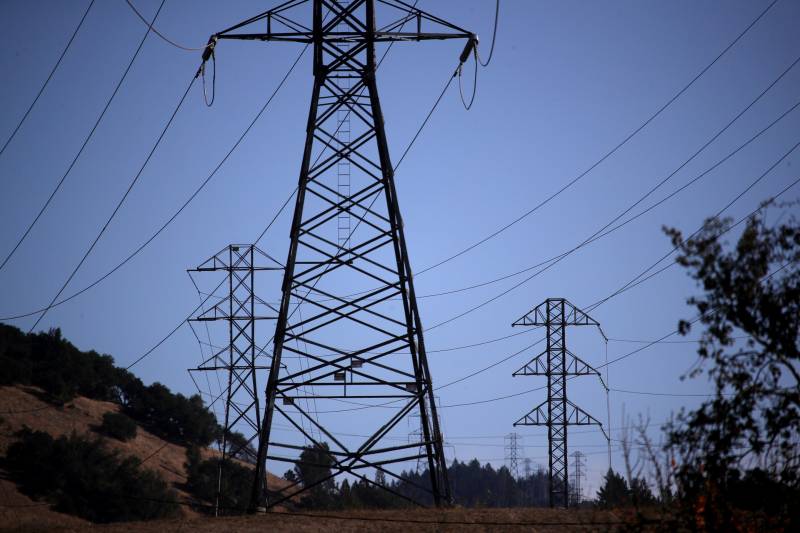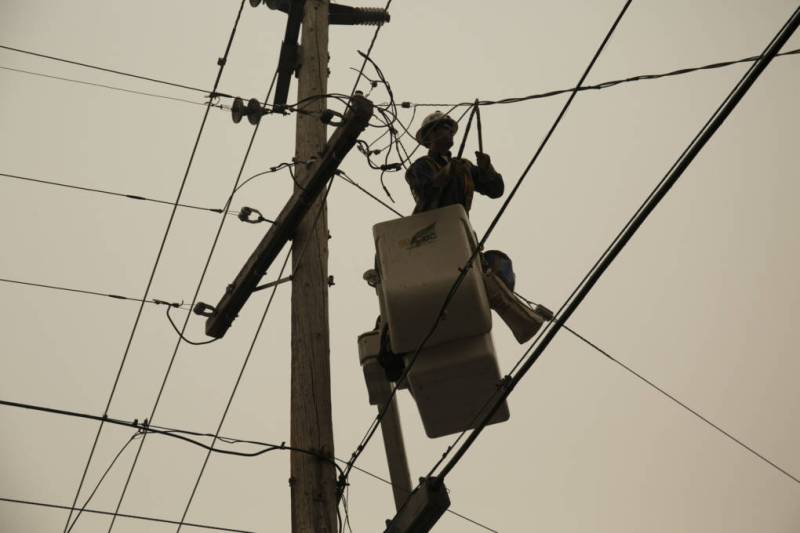In some cases, if possible, you might consider staying with family or friends during the outage to pool resources. If you have medical needs that rely on power, consider planning which family members or friends you can stay with during a lengthy power outage. You might also talk to your doctor in advance about how to prepare with medications or mobility needs.
Preparing for an emergency takes time and money — something many of us have in short supply. If it’s something you feel you have the time and the budget for, you could consider buying two sets of the items listed below and coordinating with a neighbor in need.
Things to have close at hand before a potential power outage:
- Battery-powered flashlights, ideally one for every household member
- A supply of fresh batteries, including extras for any medical devices that require electricity
- Portable chargers or battery packs to keep your mobile phone charged
- LED candles, instead of wax candles, are recommended by PG&E
- A battery-powered radio to hear updates on fire conditions and outages
- Nonperishable food (think canned goods) and water: The state recommends having enough food and water for every member of your household for three days (Here’s what we suggest goes in an emergency bag in case you have to evacuate your home because of wildfire)
- A thermometer to make sure your food is safe to eat (more on that below)
- A list of emergency contacts prepared
Make sure you know exactly where these crucial items are, so you’re not scrambling to find them in the dark.
Other things to do ahead of an outage, if you have time:
- Fully charge your cellphone and any portable chargers
- Get cash, as ATMs may not work during a power outage
- Top your vehicle up with a full tank of gas (similarly, gas stations may not be operational during an outage)
- Fill up plastic containers with water and store them in your freezer, which you can use later as ice substitutes to keep food fresh
Additionally, make sure you and your household all know:
- How to manually open any door in your home or building that requires electricity (think garage doors, apartment complex doors that require key cards)
- How you’ll communicate in an emergency situation, and not depend on a phone that needs electricity
- How you’ll operate a generator, if you have one — check ahead of time that the one you have works, and make sure you know how to use it safely and eliminate the risk of carbon-monoxide poisoning
- Which of your neighbors might need extra assistance during a power shutoff, or even just appreciate you checking in
Where can I find additional support during a power shutoff?
During planned shutoffs, PG&E opens daytime, drop-in Community Resource Centers, or CRCs, offering ADA-accessible restrooms and hand-washing stations, medical equipment and device charging, Wi-Fi, bottled water, snacks, air-conditioning or heating, seating and ice. Search for a PG&E Community Resource Center in your county here.
Disabled and older people can call 211 or text “PSPS” to 211211 to access local health and social services including medical support, shelter and food. Support is available in multiple languages.
PG&E’s Portable Battery Program provides free backup portable batteries for those with life-assisting electric medical equipment who also are enrolled in their Medical Baseline Program and California Alternate Rates for Energy or Family Electric Rate Assistance programs, and who live in high fire-threat districts.
Folks who rely on power to live independently can access portable backup batteries, hotel accommodations, accessible transportation and food vouchers through the California Foundation for Independent Living Centers’ Disability Disaster Access and Resources program.
What should I do during a power shutoff?
Once the power is off, keep in mind that emergency responders may be dealing with their own backup power needs and any emergency medical situations that come up. Do not call 911 unless it’s an emergency.
Additionally, infrastructure such as traffic lights may be affected — so proceed with caution. In the past, San José has asked residents to avoid driving if the power is shut off and to stop at dark signals.
Turn off (almost) all your appliances
If your power goes out, be sure to unplug or turn off any appliances and equipment to prevent damage from surges when the power is restored.
PG&E recommends keeping one lamp turned to the on position, to alert you when power has returned. You can then turn each appliance back on one by one.
Keep your food safe and edible during an outage
Once your power is out, be especially purposeful about when you open your freezer or your refrigerator.
A refrigerator that loses power can keep food cold for about four hours, and a freezer for about 48 hours, if they’re kept closed. Plan to rely on coolers with ice or any water-filled plastic containers you’ve frozen ahead of time (and remember: Ice is available free at your county’s Community Resource Center).
The state recommends that during an outage, you monitor food temperatures with a thermometer — and throw out any food that has a temperature of 40 degrees or higher.
If you’re opting to use a camp stove or a grill in the absence of your oven or microwave, you should only use these appliances outdoors.
If you’re without power for more than 48 hours, you may qualify for compensation from PG&E. Read more about the PG&E Safety Net program, which offers these payments due to “severe events, like storms”, and get more information about claiming back the costs of spoiled food after an outage.
Power will be restored after the dangerous conditions have passed and once safety checks have been done for all the lines in that area. If there are a large number of people who have had their power shut off, then it may take multiple days before PG&E gets the power turned back on for everyone.
If you experience a loss due to extended power outages — such as the food in your fridge going bad — you can file a claim with the utility.
Why are these PG&E public safety power shutoffs happening?
The deadliest wildfire in state history — the 2018 Camp Fire — swept through the community of Paradise and killed 85 people. That fire was ignited by PG&E power lines amid strong winds and tinder-dry conditions. To guard against similarly devastating new wildfires and new liability, in 2019 PG&E began preemptive power shutoffs when conditions are exceptionally dangerous.
Also in 2019, the California Public Utilities Commission approved rules for how the state’s major utilities should preemptively shut off the power during times of high fire danger. However, some utilities, such as San Diego Gas and Electric, had been shutting off the power to help prevent fires for years earlier.
How are shutoffs different from rolling blackouts?
Sometimes Californians also lose power because of strains on the system. The California Independent System Operator (ISO) manages the delicate balance of power supply and demand on the state’s electrical grid and can order utilities to cut power to customers.
“It’s one big interconnected system,” said John Phipps, an operations director with California ISO. “Energy being generated at one plant can feed homes completely on the other end of the state.”
For example, Phipps said, “if Diablo Canyon had problems in Northern California, that could impact San Diego.”
An earlier version of this story published on Sept. 8, 2020.

